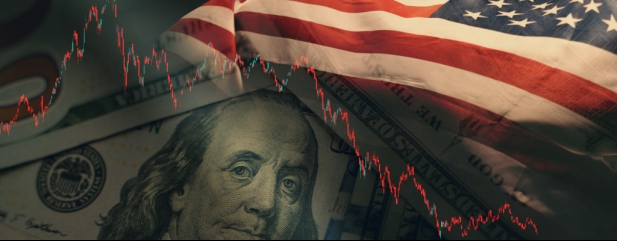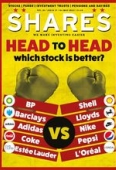Archived article
Please note that tax, investment, pension and ISA rules can change and the information and any views contained in this article may now be inaccurate.
The banking sector is in big turmoil, what comes next?

For all the hoopla over the first quarter’s US tech sector results, markets don’t seem to be making much progress which suggests there is something else worrying investors.
The number one suspect must be the banks, which in the space of a couple of months have been transformed from heroes into villains, none more so than US regional institutions.
Shares spoke with George Barrow, co-manager of the Polar Capital Global Financials Trust (PCFT), to get his take on recent developments in the sector.
WHAT HAVE WE LEARNED THIS YEAR?
The obvious lesson from this year’s turmoil, particularly in US banks, is not all companies are created equal and betting on the sector without doing any in-depth research on individual stocks is a recipe for losing money.
The team at Polar Capital have decades of experience in analysing companies and have seen plenty of ups and downs, so although the broad sell-off in financials has dented the fund’s net asset value it hasn’t fazed them.
Silicon Valley Bank was a huge beneficiary of growth in VC (venture capital) funding in recent years, but its failure to hedge the interest rate risk on its enormous book of US treasuries (government debt) and mortgage-backed securities meant it racked up crippling losses leading to a crisis of confidence.
Signature Bank on the other hand was uniquely exposed to the crypto phenomenon, which attracted huge amounts of ‘hot’ money when times were good but those inflows rapidly turned into outflows which again triggered a run.
‘The catalyst for both failures was a sudden outflow of deposits, no different to what we saw during the global financial crisis, but critically this isn’t about toxic assets sat on weak balance sheets as it was then’, says Barrow.
For VC firms and other corporates, the fact their deposits weren’t insured beyond a basic level meant they could have faced substantial losses if either bank went bust, which heightened the need to get their money out as quickly as possible.
IS THE SELLING OVER?
While the US authorities moved quickly to shore up the system, a third bank – First Republic – has now seen a regulator-brokered takeover by JPMorgan (JPM:NYSE) after it recorded over $100 billion of deposit outflows in March causing its share price to collapse.
Even so, the issues with US banks are ‘not systemic’ insists Barrow, who points to the return of deposits to other smaller US regional players like PacWest Bancorp (PACW:NASDAQ) and Western Alliance Bancorp (WAL:NYSE) since the start of April.
‘We cut our holdings in smaller US regional banks while adding to JPMorgan and Wells Fargo (WFC:NYSE) as relative beneficiaries of the volatility’, he reveals.
While mindful of the potential for further fall-out in terms of share prices, Barrow says the team is actively surveying the asset quality of the US banks and keeping a close eye on valuations with a view to buying back into some of the better-quality regional lenders at some point.
‘The system has been tested, and balances for small and mid-cap banks have been stable in April. In fairness, given the rapid rise in US interest rates from 1% to 5% it is surprising more things haven’t broken, and at 1.1 times book value and seven times earnings some of the valuations are looking interesting’, he says.
WHAT ARE THE ECONOMIC CONSEQUENCES?
The most likely outcome from all this upheaval is banks will have to compete for deposits in future to deter customers from taking their money out at the first sign of trouble.
There is also likely to be greater regulatory supervision, particularly of US regional lenders, and there could be an increase in the number of deposits insured under the FDIC (Federal Deposit Insurance Corporation), although this will put more costs on the banks.
The flip side to this is banks will likely reduce the amount they lend, particularly to higher-risk borrowers, while charging more, which will limit the supply of credit.
The knock-on effect is consumers will start to spend less and companies will be less willing to invest, which is bad for jobs and ultimately the broader economy.
‘In a sense the Silicon Valley saga has done some of the Fed’s job for them’, suggests Barrow, referring to the fact the US central bank has been tightening credit conditions specifically to cool the economy and tame inflation.
A slowdown is already evident from the latest results from JPMorgan, the largest holding in the trust.
The bank’s chief executive Jamie Dimon commented: ‘The storm clouds that we have been monitoring for the past year remain on the horizon, and the banking industry turmoil adds to these risks.
‘The banking situation is distinct from 2008 as it has involved far fewer financial players and fewer issues that need to be resolved, but financial conditions will likely tighten as lenders become more conservative, and we do not know if this will slow consumer spending’, added Dimon.
Important information:
These articles are provided by Shares magazine which is published by AJ Bell Media, a part of AJ Bell. Shares is not written by AJ Bell.
Shares is provided for your general information and use and is not a personal recommendation to invest. It is not intended to be relied upon by you in making or not making any investment decisions. The investments referred to in these articles will not be suitable for all investors. If in doubt please seek appropriate independent financial advice.
Investors acting on the information in these articles do so at their own risk and AJ Bell Media and its staff do not accept liability for losses suffered by investors as a result of their investment decisions.
Issue contents
Case study
Feature
Great Ideas
News
- Cloud computing, not artificial intelligence, is what’s really driving big tech earnings
- HSBC shares leap as profits triple and firm announces $2 billion buyback
- Meta Platforms’ shares continue to soar on AI hype and cost cuts
- Shares in Ocado are down 44% in 12 months as the company closes key facility
- Could the sustained rise in food prices become a political issue?

 magazine
magazine








